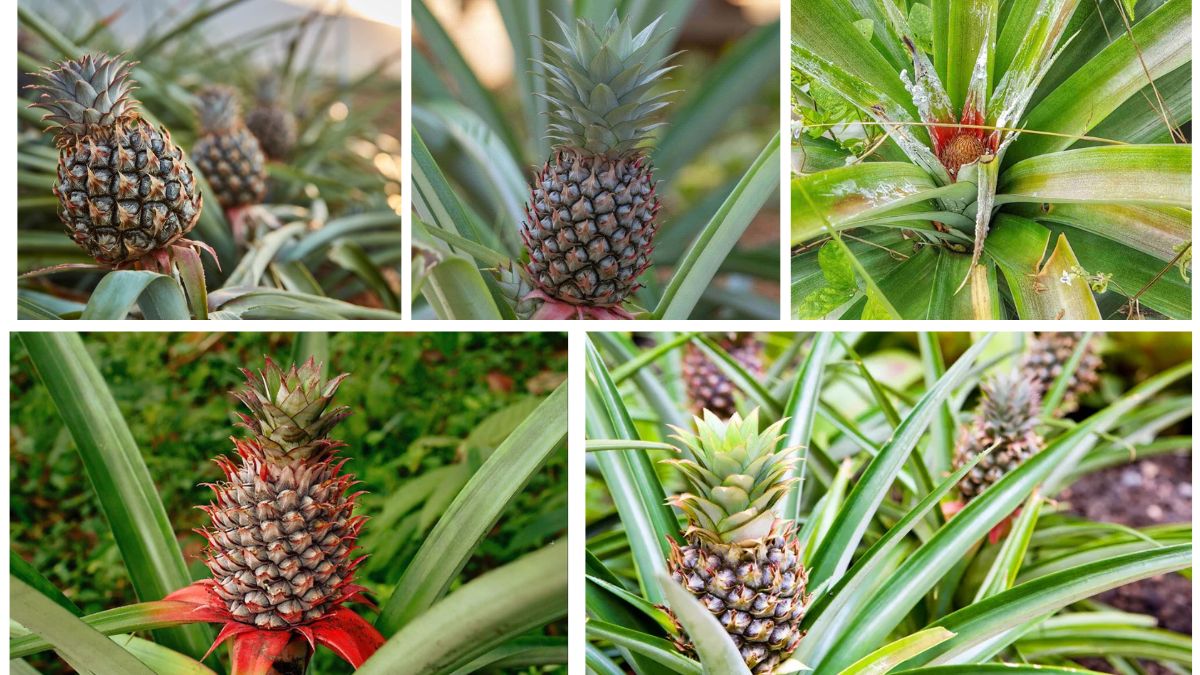Pineapples are among the most loved tropical fruits, cherished for their juicy sweetness and refreshing flavor. While they’re commonly found in markets, few people realize how easy it is to grow this exotic fruit at home. With just a little patience and care, you can plant pineapples and enjoy a bountiful harvest right from your garden, balcony, or even indoors in containers. This step-by-step guide will walk you through everything you need to know about planting pineapples for a delicious tropical yield.
Introduction to Pineapple Growing
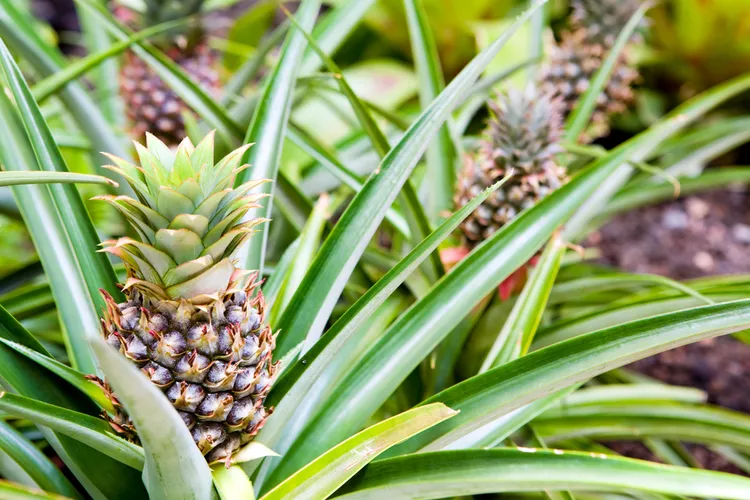
The pineapple (Ananas comosus) is a tropical fruit native to South America and widely grown in warm climates worldwide. Unlike many fruits that grow on trees, pineapples grow close to the ground on short, sturdy plants with spiky leaves. Each plant produces one large fruit at a time, and while the growing process requires patience—typically 18–24 months—the reward of harvesting your own sweet pineapple is truly worth the wait.
The best part? You don’t need seeds to grow pineapples. You can propagate them easily from the crown of a store-bought fruit, a slip, or a sucker. This makes pineapple growing accessible to beginners and fun for home gardeners.
Step 1: Choosing the Right Pineapple Crown
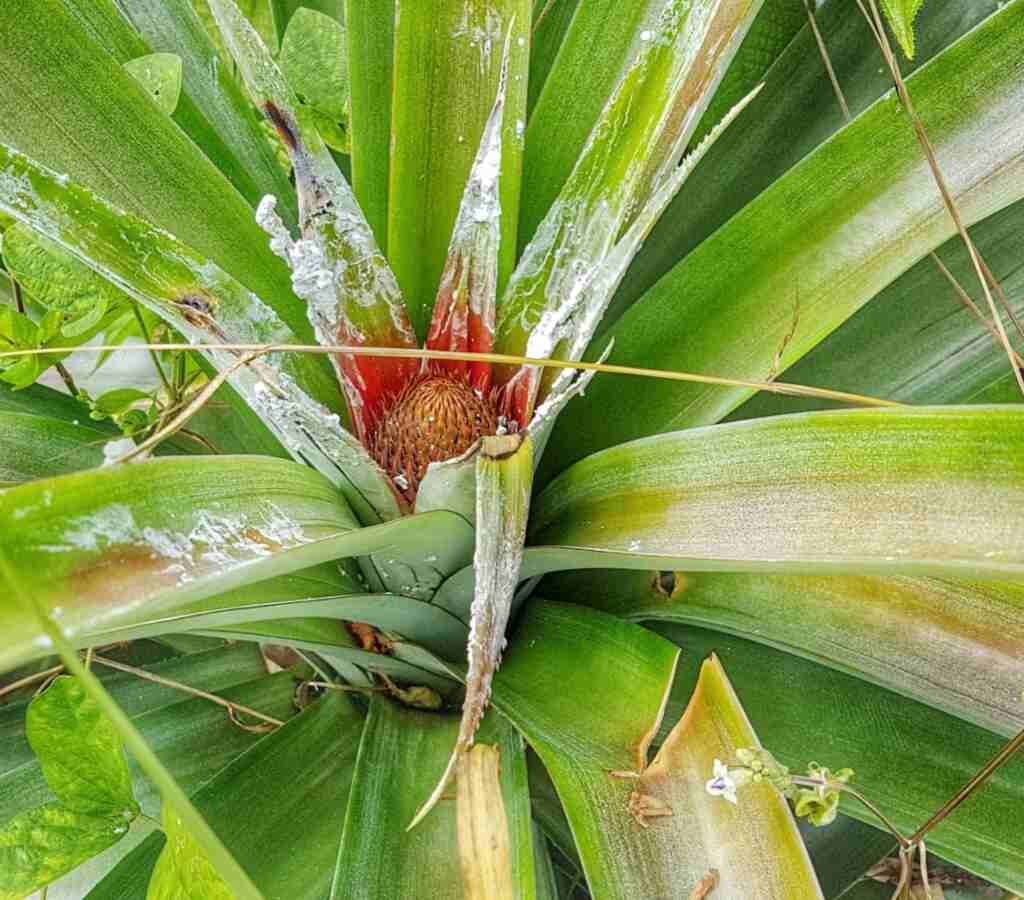
The easiest way to start your pineapple plant is by using the leafy crown from a fresh pineapple:
- Select a healthy fruit – Choose a ripe pineapple with bright green leaves and no signs of rot, mold, or pests.
- Remove the crown – Twist off the leafy top from the fruit. Alternatively, you can cut it with a sharp knife, but make sure to leave no fruit flesh attached as it may rot.
- Prepare the crown – Peel off the lower few layers of leaves to expose about one inch of stem. Small root buds may already be visible.
- Drying process – Allow the crown to dry in a shaded place for 1–2 days. This helps prevent rotting when planted.
Step 2: Rooting the Pineapple Crown
Rooting can be done in two ways:
- In water – Place the prepared crown in a jar of water, making sure only the base touches the water. Change the water every few days. Within 2–3 weeks, roots will begin to grow.
- In soil – Plant the crown directly in well-draining potting soil. Keep the soil slightly moist and place it in a warm, sunny spot. Roots typically develop in about 4–6 weeks.
Both methods work well, but starting in water allows you to observe the root growth, which can be exciting for beginners.
Step 3: Choosing the Right Location
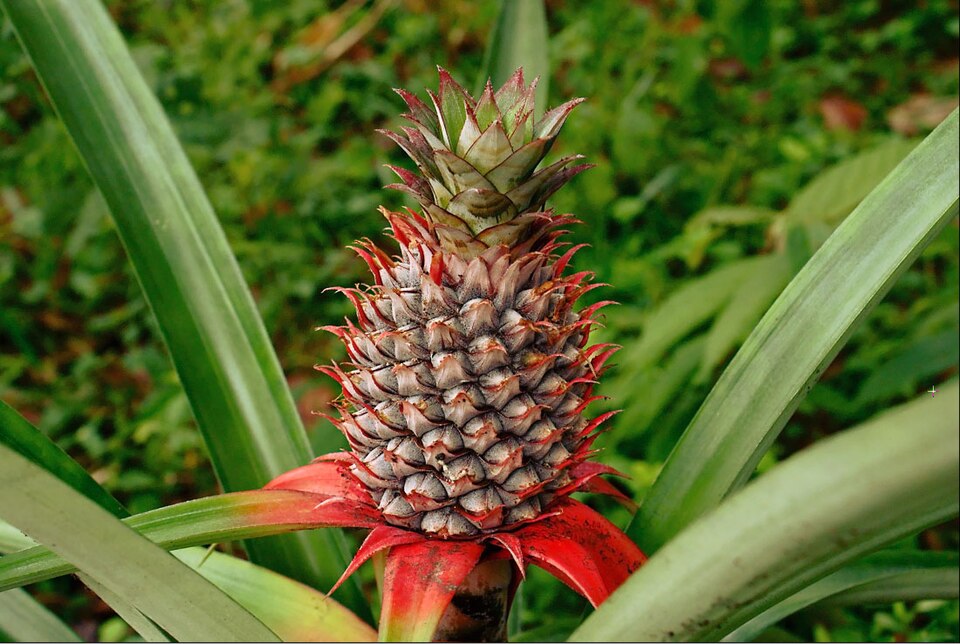
Pineapples thrive in warm, tropical conditions. If you live in a cooler climate, growing them indoors or in containers is the best option.
- Temperature – Pineapples prefer temperatures between 65–95°F (18–35°C). Protect them from frost.
- Sunlight – At least 6–8 hours of bright sunlight daily is necessary for healthy growth. Place them near a sunny window or under grow lights if indoors.
- Container vs. Ground – In cooler regions, use a large pot (12–14 inches wide) with good drainage. In warmer areas, you can plant them directly in the ground.
Step 4: Preparing the Soil
Pineapples need light, sandy, and well-draining soil. Heavy, clay-rich soil can lead to root rot.
- Ideal pH – Slightly acidic soil with a pH of 4.5–6.5 is best.
- Soil mix suggestion – Combine sandy garden soil, perlite, and organic compost for best results.
- Drainage – Always ensure proper drainage, as pineapples do not tolerate waterlogged conditions.
Step 5: Planting the Pineapple
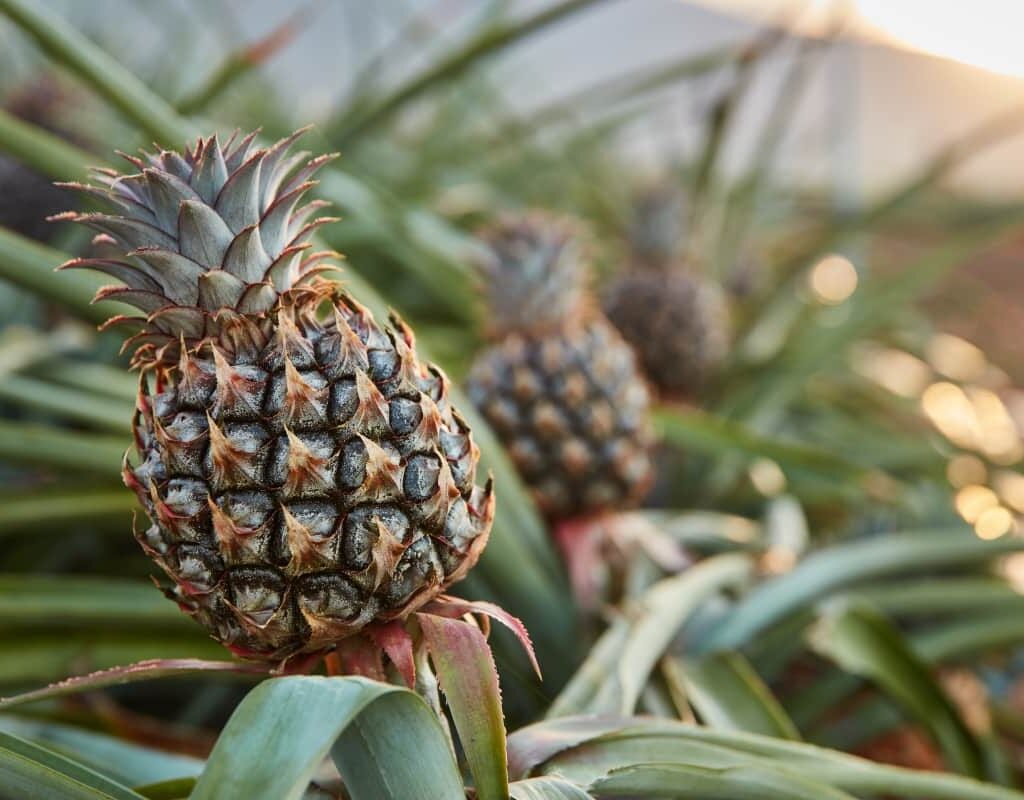
Once your crown has roots, it’s time to plant:
- Dig a shallow hole in the prepared soil or container.
- Place the rooted crown into the hole, ensuring the base is level with the soil surface.
- Firm the soil gently around the plant to keep it upright.
- Water lightly, making sure not to overwater.
Step 6: Watering and Fertilizing
Watering Tips:
- Pineapples are drought-tolerant but prefer moderate watering.
- Water the soil lightly once a week, ensuring it remains slightly moist but never soggy.
- Pour water into the central rosette (the cup formed by the leaves), as this helps mimic natural rainfall.
Fertilizing Tips:
- Pineapples are slow growers and need nutrients for healthy fruiting.
- Use a balanced liquid fertilizer (10-10-10) every 2–3 weeks during active growth.
- Foliar feeding (spraying diluted fertilizer directly on leaves) is highly effective.
- Once the plant matures, switch to a fertilizer high in phosphorus to encourage flowering and fruit production.
Step 7: Caring for Your Pineapple Plant
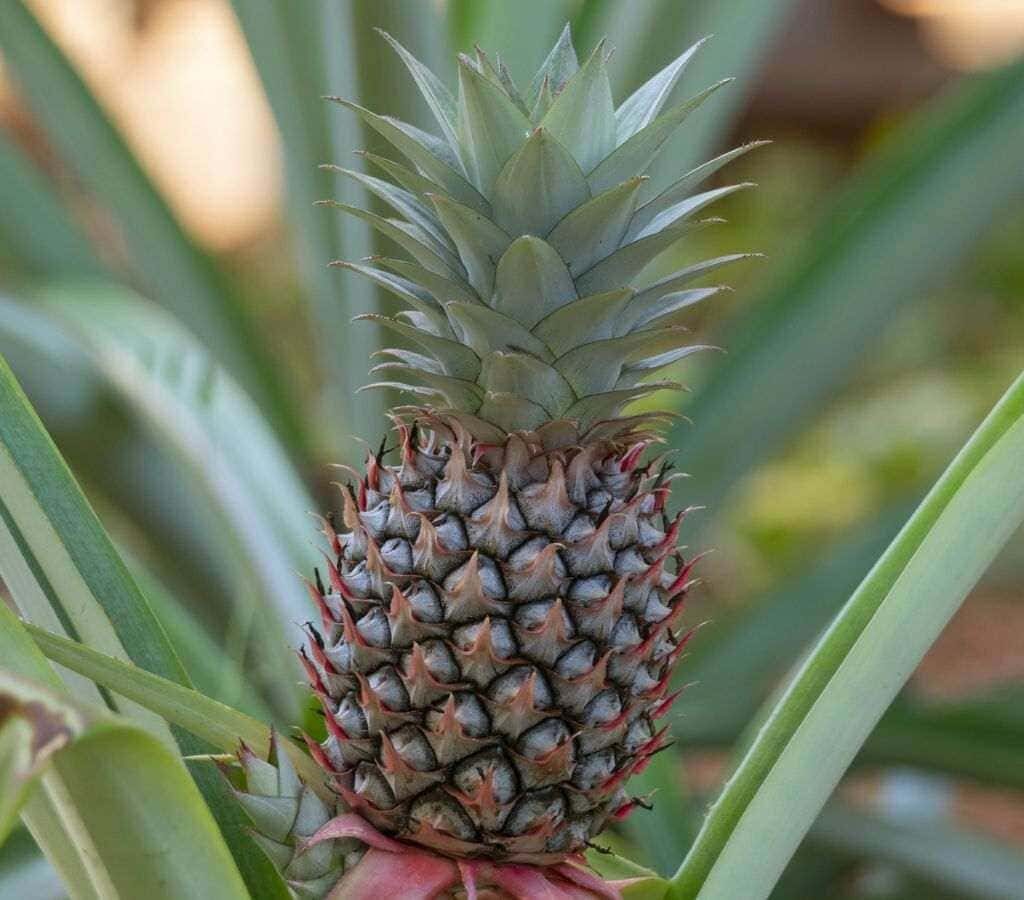
To ensure your plant grows healthy and produces fruit:
- Pruning – Remove dead or yellow leaves to keep the plant neat.
- Weeding – Keep weeds away from the base to avoid nutrient competition.
- Pest control – Watch out for mealybugs, scale insects, and fungal issues. Use neem oil or insecticidal soap if needed.
- Mulching – Applying organic mulch helps retain soil moisture and regulate temperature.
Step 8: Encouraging Flowering and Fruiting
Pineapples typically take 18–24 months to produce their first flower. Once the flower blooms, it takes about 5–6 months for the fruit to develop.
If your plant seems reluctant to flower, you can encourage blooming with these tricks:
- Ethylene method – Place a ripe apple or banana near the plant and cover with a plastic bag for a week. The ethylene gas stimulates flowering.
- Calcium carbide method – Some gardeners use diluted calcium carbide solution in the rosette to induce flowering.
Step 9: Harvesting Pineapples
You’ll know your pineapple is ready for harvest when:
- The fruit turns golden-yellow from the base upward.
- It emits a sweet aroma when sniffed close.
- The fruit feels slightly soft when pressed.
To harvest, cut the fruit close to the base with a sharp knife. Each plant produces only one main fruit, but new shoots (suckers and slips) will grow and can be used to start new plants.
Step 10: Propagation for Continuous Yield
After harvesting, you don’t need to start over from scratch. Pineapples naturally produce:
- Suckers – Shoots that grow between the leaves of the main plant.
- Slips – Shoots that grow just below the fruit.
- Crowns – The leafy top of the fruit, which can be replanted.
By replanting these parts, you can maintain a continuous cycle of pineapple plants and enjoy multiple harvests over time.
Common Problems and Solutions
- Yellowing leaves – Often due to overwatering; reduce watering frequency.
- Slow growth – May indicate poor sunlight or lack of nutrients; move to a sunnier spot and fertilize.
- Rotting base – Usually caused by soggy soil; improve drainage immediately.
- No flowers after 2 years – Try the ethylene method to trigger blooming.
Conclusion
Growing pineapples at home is not only rewarding but also surprisingly easy with the right care. By starting with a simple crown, preparing well-draining soil, and providing sunlight, water, and nutrients, you can enjoy a sweet tropical harvest in your own backyard or even indoors. The process requires patience, but the joy of harvesting a fruit you’ve nurtured from start to finish is unmatched.
With continuous propagation from suckers and crowns, your pineapple garden can thrive for years, ensuring a steady supply of fresh, delicious pineapples. So why not start today and bring a taste of the tropics right to your home?
